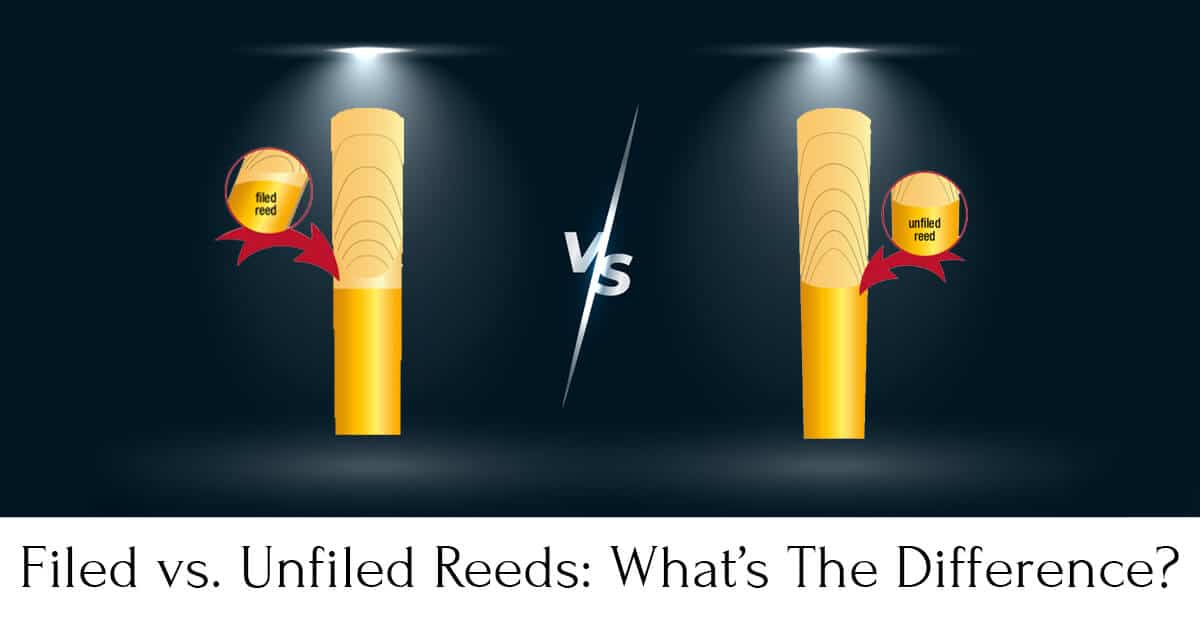If you don’t know the difference between filed vs. unfiled reeds, you won’t be able to make an informed decision when you’re shopping for your next reed. They have different shapes, and as we know, shapes and sizes make all the difference when it comes to sound production in musical instruments. So, without further ado, let’s explore the difference.
Table of Contents
What’s the Difference Between Filed vs. Unfiled Reeds?
Filed Reeds
Filed reeds have an extra strip of bark removed, right under the vamp in a straight line. What this means for the reed is that it becomes more flexible and provides the player with a faster response. Filed reeds are also known as French cut reeds or double-cut reeds.
Moreover, filed reeds are great for smaller saxophone sizes, including sopranino, soprano, and they’re definitely the top alto sax reeds.
Unfiled Reeds
Unfiled reeds come with a “U” shape below the vamp, which means that there isn’t a straight line. This means that unfiled reeds produce a much more powerful tone. These ones are also called single cut reeds, regular reeds, or American Cut reeds.
Unfiled reeds make a good combination with bigger saxophones like tenor, baritone, and even bass ones.
Which One Should I Choose?
If you prefer darker mouthpieces with more resistance, you’ll probably feel more comfortable using a filed reed. This is because the space for blowing that filed reeds offers makes up for the resistance of these mouthpieces. Moreover, filed reeds give you a better sound when playing classical music as they’re more tonal and darker.
Alternatively, an unfiled reed would be more suitable for you if you play brighter mouthpieces that are relatively easier to blow. What’s more, they’re a more suitable choice for pop or jazz saxophonists as they’re edgier and brighter in sound.
Still, the difference that this feature makes in terms of the tone color of the reed is so slight that it’s not as important as the actual profile of the vamp, so make sure that you set your priorities straight when choosing.
Conclusion
In a nutshell, filed reeds are the best choice for darker and more somber music and are preferred by classical players. On the other hand, unfiled reeds are pop and jazz players’ choice as they’re known for the brightness of sound and ease of playability.
And while the difference is quite slight between filed and unfiled reeds, the pairing with a mouthpiece can be a game-changer, so make sure to take the mouthpiece into account when you’re trying to make a decision. But the good news is that reeds are very affordable and interchangeable, so you can actually try the options out and pick the one whose sound you prefer.

